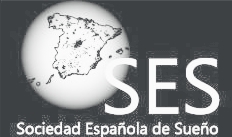Pediatric OSAS: Oximetry can provide answers when polysomnography is not available.
Kaditis A, Kheirandish-Gozal L, Gozal D. Sleep Med Rev. 2015 Jun 4;27:96-105.
Overnight polysomnography is the gold standard tool for the diagnosis of obstructive sleep apnea syndrome (OSAS) in habitually snoring children, but it is expensive and not always available. Nocturnal oximetry has been proposed as an abbreviated and low-cost testing modality for the diagnosis of OSAS. In this systematic review, 25 original articles were evaluated to: (i) summarize reference values of nocturnal oximetry parameters in healthy children; (ii) identify abnormal oximetry patterns that predict OSAS in habitually snoring children; (iii) delineate abnormalities in oximetry that can predict responses to treatment interventions for OSAS and potential complications. Nocturnal SpO2 drops <90%, more than two clusters of desaturation events (≥4%) and oxyhemoglobin desaturation (≥4%) index (ODI4) >2.2 episodes/h are unusual in children without OSAS. At least three clusters of desaturation events, and at least three SpO2 drops below 90% in a nocturnal oximetry recording are indicative of moderate-to-severe OSAS. An ODI4 >2 episodes/h combined with OSAS symptoms also exhibits high positive predictive value for apnea-hypopnea index >1 episode/h. Children without clusters of desaturation events have low risk of major respiratory complications following adenotonsillectomy. Thus, nocturnal oximetry emerges as a valuable tool that can facilitate treatment decisions when polysomnography is not available.
Ventana Científica. Diciembre 2015. Artículo 105
Pediatric OSAS: Oximetry can provide answers when polysomnography is not available.


